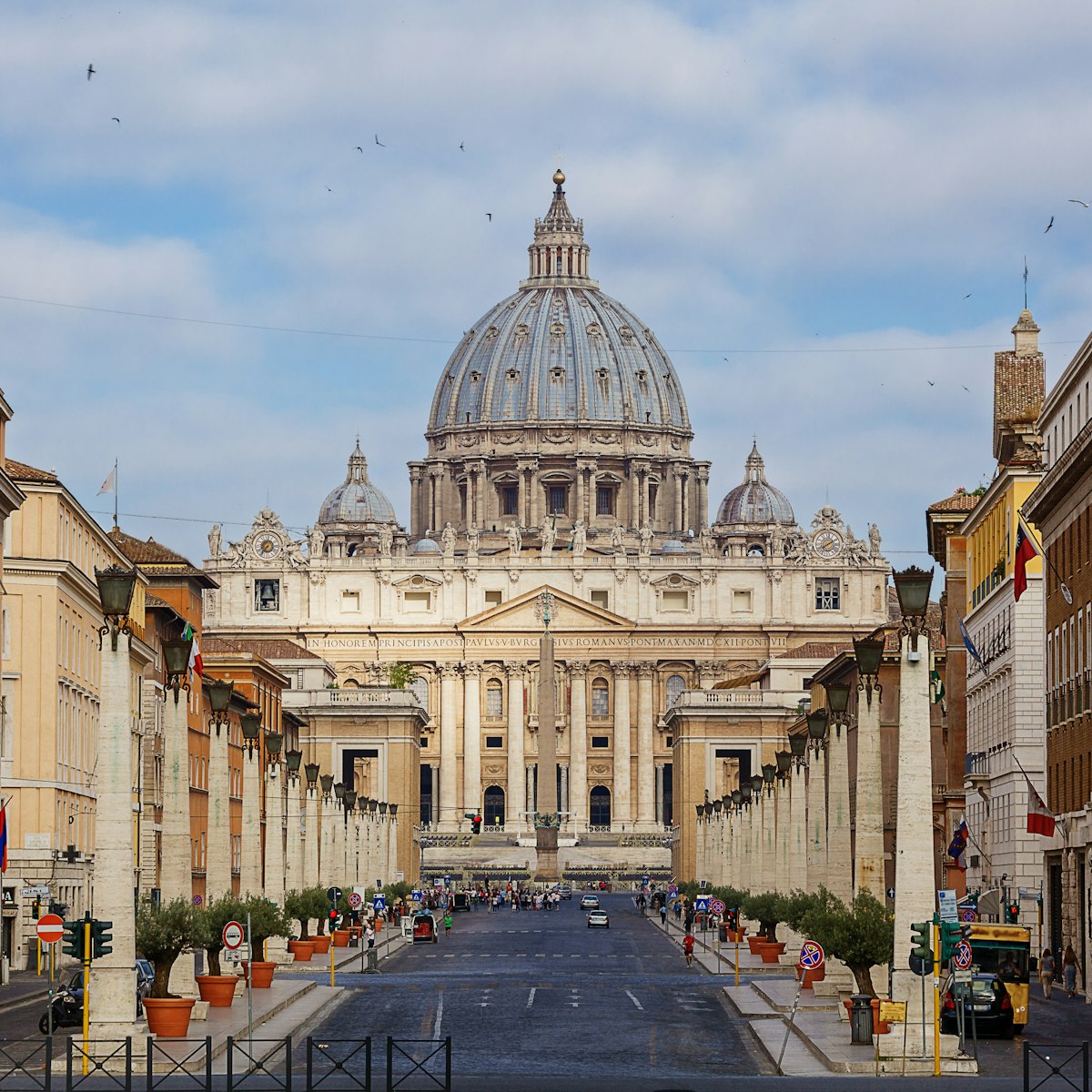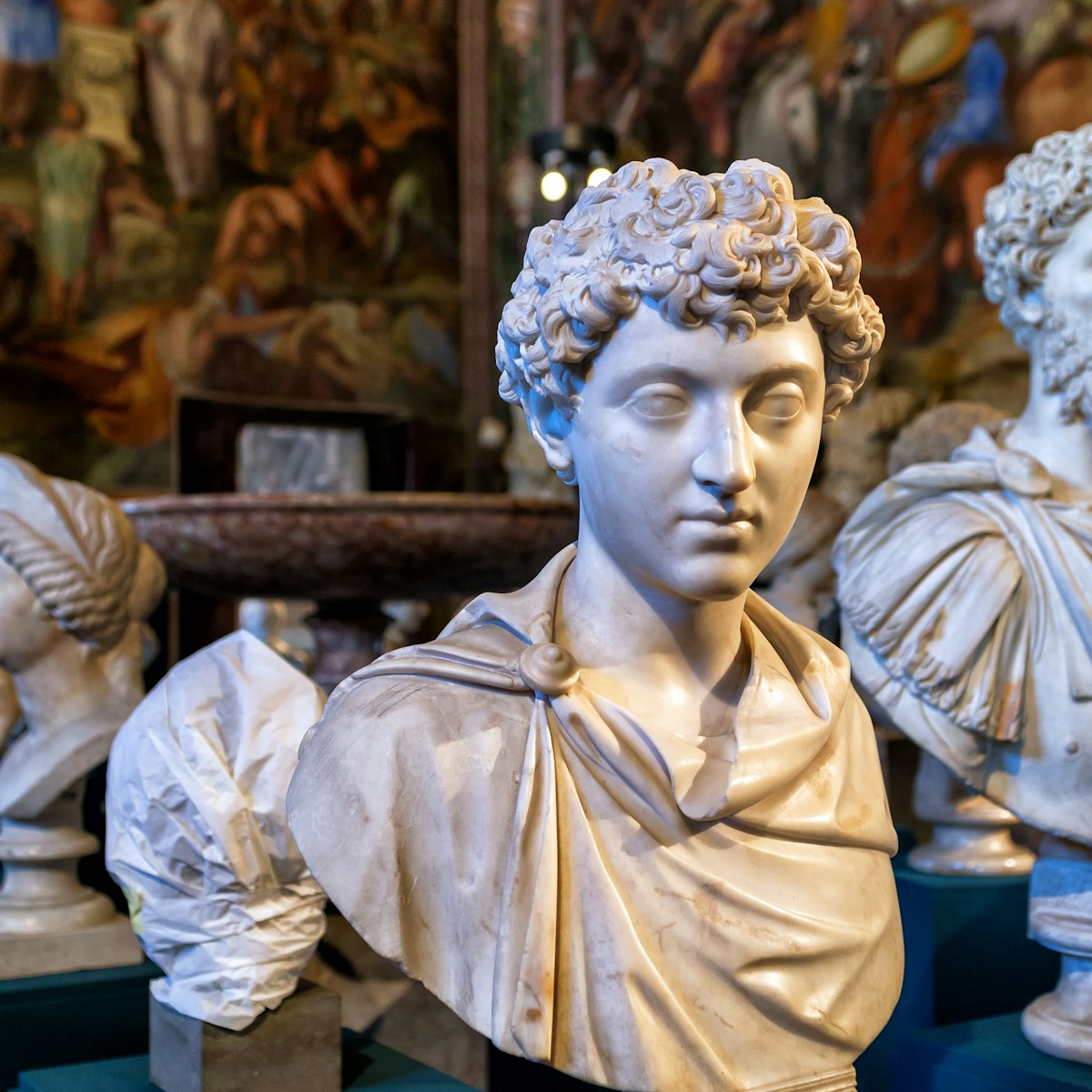At the foot of the heavily wooded Monte Mario, the Foro Italico is a grandiose Fascist-era sports complex, centred on the Stadio Olimpico, Rome’s 70,000-seat football stadium. Most people pass through en route to a football or rugby match, but if you’re interested in Fascist architecture, it’s worth a look.
Designed by the architect Enrico Del Debbio, it remains much as it was originally conceived. A 17m-high marble obelisk, with Mussolini Dux inscribed on it, stands at the beginning of a broad avenue leading down to the Stadio dei Marmi, a running track surrounded by 59 marble nudes, and the Stadio Olimpico.







